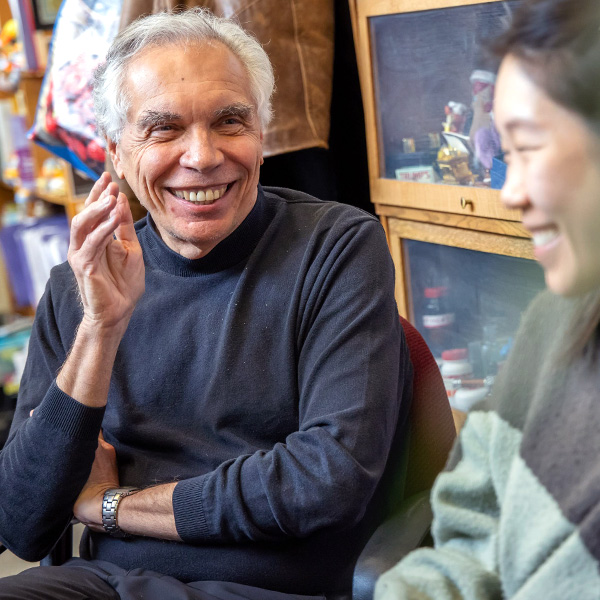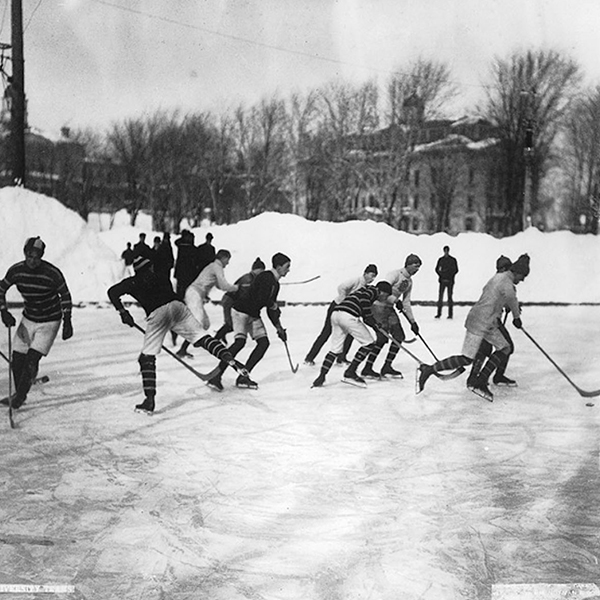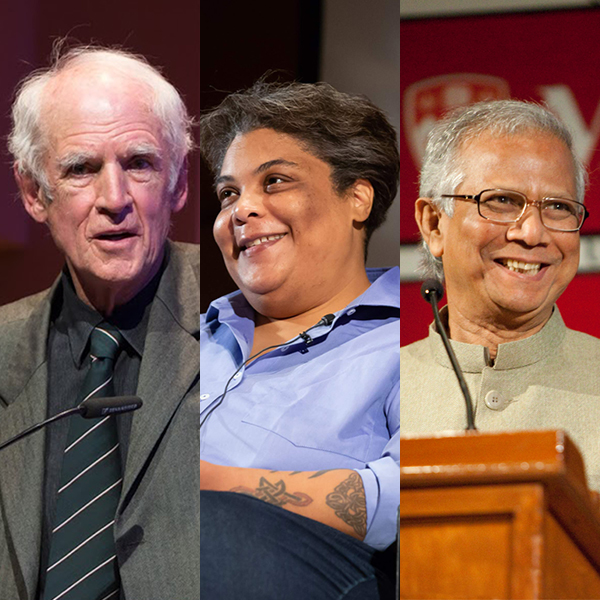When the first issue of the McGill News debuted in December 1919, it had big news to share with its alumni readership. The magazine’s very first story revealed the name of the University’s next principal.
Sir Auckland Geddes had been a professor of anatomy at McGill for two years before returning to his native Britain, where he had distinguished himself in politics, serving as a national cabinet minister. The McGill News described Geddes as “a decisive personality [who] will bring an influence hard to calculate on the academic development of Canada.”
As it turns out, Geddes had almost no impact on the academic development of Canada whatsoever.
During his very brief tenure as McGill’s principal, he never actually took up his duties. Frank Dawson Adams was McGill’s acting principal for most of that time. Geddes officially resigned as principal in 1920 and became Britain’s ambassador to the United States.
Look, when you publish a magazine for 100 years, some of your stories are bound to fizzle along the way.
That inaugural edition of the magazine also laid out its reasons for existing.
“The lack of a familiar method of communication between the graduates of the University and between them and their school has been one of the reasons why interest and affection for McGill has often remained unexpressed. By the McGill News, a means of communication is to be provided.”
Through two world wars, a Cold War, a space race, the fall of the Berlin Wall, the rise of the internet and 11 McGill principals (10 of whom did show up for the job), the McGill News has been turning up in the mail boxes (and now the in-boxes) of McGill graduates for a century.
Stephen Leacock, one of the most iconic McGill professors of them all, served as the first chair of the magazine’s editorial committee, while a young graduate, Eric Leslie, BSc 1916, LLD’61, was the magazine’s first editor.
Leslie would go on to bigger things. He eventually became the vice-president and comptroller of Canadian Pacific Railway. Leslie was a productive volunteer fundraiser for the University in that capacity – he travelled to 28 cities in his personal railway car, meeting fellow graduates and coaxing them to take out their cheque books.
Thumb through old issues of the magazine and you’ll spot articles about graduates who have done all sorts of remarkable things – Nobel laureates and Academy Award winners, astronauts and Stanley Cup champions – even a surprising number of Parti Québécois cabinet ministers.
You’ll also notice how lesser-known McGillians have frequently played intriguing roles in all sorts of newsworthy events.
H. R. Dowswell, BSc 1909, for instance. In the March 1931 edition of the McGill News, Dowswell offered a firsthand account of what it was like for him and his colleagues at the architectural firm Shreve, Lamb and Harmon to be responsible for the design of what is still one of the most famous buildings in the world, the Empire State Building.
William Lamb was the project’s chief designer, but as his firm’s specifications specialist, Dowswell could justifiably claim “a measure of responsibility in its development and construction.” The building required 6,800 windows, 7,000 radiators and 58,000 tons of structural steel. “A train, sufficient to transport all of the materials used in the building, would have been 57 miles long,” Dowswell explained in his article.
The Fall 1995 issue profiled Vincent Truglia, MA’74, who as the then-vice president and senior analyst with Moody’s Investment Service, was “the man responsible for Canada’s debt rating at … one of the two most influential agencies of its kind in the world.” When Moody’s (and Truglia) downgraded Canada’s rating, it made national headlines. Paul Martin, then Canada’s finance minister, was not a happy camper.
When Austrian skydiver Felix Baumgartner made international headlines by jumping to Earth from the stratosphere, becoming the first human to break the speed of sound in freefall, McGill News readers discovered that Shane Jacobs, BEng’04, helped design the suit that enabled Baumgartner to survive the feat.
When Lemony Snicket’s A Series of Unfortunate Events became an international publishing phenomenon (more than 65 million copies sold), McGill News readers discovered the instrumental role that book editor Susan Rich, BA’91, had played in creating the series.
When suave host Alex Trebek firmly entrenched Jeopardy! as, arguably, the most beloved TV game show on the planet, McGill News readers learned that the show’s head writer, Emmy Award winner Billy Wisse, BA’84, MA’94, was ultimately responsible for supplying Trebek with all those clues and answers.
The world comes to you
“The great thing about working at a university, and especially at one as prominent as McGill, is that the world comes to your door,” says Diana Grier Ayton, the editor of the McGill News from 1998 to 2007.
That fact was brought home to her in dramatic fashion in 1993, when she was editing the McGill Reporter, the University’s staff/faculty newspaper. “I was wandering up a back staircase at Redpath Hall, and I ended up bumping into Mikhail Gorbachev on a landing.” The former Russian leader was at McGill to deliver the annual Beatty Lecture. “I remember thinking, what kind of job do I have that I end up [face-to-face] with Mikhail Gorbachev?”
During Grier Ayton’s time at the McGill News, the magazine covered stories that dealt with big news on campus – the launch of an ambitious plan to hire 1,000 new professors, for instance. Odder, quirkier stories appeared too – Alice Lehrer, BA’68, the McGill grad who served as a stand-in for Bette Midler in a film (the occupational therapist was a dead-ringer for Midler), and Hélène Mathieu, BCL’93, LLB’93, who became the first woman to practice law in the United Arab Emirates.
“There are always so many stories at McGill,” says Grier Ayton. “You’re never at a loss for things to write about. All the research that goes on, all the graduates and the interesting things that they’re doing. The hard part is choosing.”
“I came to McGill from the private sector where people were much more proprietary in their knowledge of things and generally kept what they knew close to their vests,” says Ann Vroom, BA’67, who served as the editor of the McGill News from 1985 to 1989. “At McGill, everyone was so proud to know so much about their respective disciplines and they were only too happy to share that knowledge. I found it wondrous to be in that kind of environment.”
Some of the stories that appeared in the News under Vroom’s watch dealt with the status of women at McGill (18 per cent of the faculty were women at the time – nothing to boast about, but a touch above the 17 per cent Canadian average), McGill’s 1987 national championship football team, and McGill music professor Joel Wapnick, who, outside the classroom, was one of North America’s top-ranked Scrabble players (and a future world champion).
“As the editor of the McGill News, you find yourself in the very fortunate position of having an engaged readership that truly wants to read [your magazine],” says Vroom. “They care about the institution and they want to support it.”
It’s a smart, well-educated readership too – most of them graduated from this university, after all. They keep editors on their toes.
“If you made a mistake with grammar or word usage, you heard about it,” says Janice Paskey, the magazine’s editor from 1990 to 1998 (she took some time off for graduate studies in Chile).
“We did one story on all the former McGill Daily editors and that was one of my favourite McGill News covers,” says Paskey. “We had the current editor of the Daily at that time [M.J. Milloy], posed next to a former Daily editor [Gerald Clark, BSc’39, who went on to be the editor of the Montreal Star]. I was at the photo shoot and it was just so interesting to listen to them talk about [journalism]. The generational divide between them just melted away.”
Another cover story during Paskey’s tenure dealt with McGill graduates who were judges, talking about their most memorable court cases. Quebec Superior Court judge Benjamin Greenberg, BA’54, BCL’57, appeared on the cover.
“He had this really stern, serious look on his face, and there were lawyers afterwards who told me, ‘Oh, that cover sent shivers down my spine. He has that same look in court and it just unnerves you,’” says Paskey.
Contentious times
Harvey Schachter, BCom’68, edited the McGill News from 1969 to 1972, a turbulent period that coincided with Quebec’s Quiet Revolution and strident student protests. Articles from that era reflected the times (stories about McGill’s place in Quebec and a provocative look at drug use among students), while also casting the spotlight on interesting McGillians – Ken Dryden, LLB’73, LLD’18, for instance, who was balancing his McGill law studies with tending goal for the Montreal Canadiens.
“It was a very contentious and combustible time for the University,” says Schachter. He remembers pushing at the boundaries in terms of some of the content that ran in the McGill News. The story on drug use, for instance, “caused a furor.
“I was at an event, and [McGill principal] Rocke Robertson walked up to me – he was a big, tall guy – and he put his fingers on my chest and said, ‘I’ve been told to get rid of you and that isn’t going to happen.’ I remember saying that the radicals on campus did a better job of talking to me than the university officials did.”
Soon after that, Robertson began meeting with Schachter every six weeks. “He’d just talk about what he was doing, the problems [McGill] faced, and what his vision was. It was all off the record, but the idea was for me to understand what was going on. It was an extraordinary experience for a young journalist. He was extremely candid and I think, in some ways, he looked forward to those chats as much as I did.”
Along with her associate editor Andrew Mullins, Grier Ayton combed through hundreds of issues of the McGill News to prepare an 80th anniversary edition in 1999. “The magazine changed over time,” she says. “It started out with a bit of a literary bent and then it became very newsy and McGill-oriented.”
During the Second World War, “it was a very important document, chronicling the activities of faculty and staff and all the McGill people who served overseas,” says Grier Ayton. “My uncle and my dad were McGill students who left and went overseas.”
Former McGill News editor R.C. Fetherstonhaugh put together a regular wartime section “On His Majesty’s Service” that ran in the magazine between 1939 and 1945. More than 5,500 McGillians took part in the war. Fetherstonhaugh’s reports included news on McGillians who had won military honours, as well as those who were killed in combat, missing in action, or prisoners of war. Almost 300 McGillians died in the war.
Vroom continues to be an active member of the McGill community. She chairs McGill’s Friends of the Library Committee and is a member of the campaign cabinet for the University’s new two billion dollar fundraising campaign.
“Alumni magazines have a great role to play,” says Vroom. “They should showcase a university’s wonderful qualities, but I think they also have to look at the challenges their institutions face, and that should be done with honesty and forthrightness. You have an audience of educated and loyal people and they deserve to be treated with respect. The people who don’t care about your university won’t be reading your magazine in the first place.”


